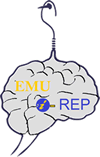JavaScript is disabled for your browser. Some features of this site may not work without it.
| dc.contributor.advisor | Dağ, Gülten Sucu (Tez Danışmanı) | |
| dc.contributor.author | Altunsoy, Cansu | |
| dc.date.accessioned | 2025-04-09T10:54:08Z | |
| dc.date.available | 2025-04-09T10:54:08Z | |
| dc.date.issued | 2022-02 | |
| dc.date.submitted | 2022-02 | |
| dc.identifier.citation | Altunsoy, Cansu. (2022). Hemşirelik Öğrencilerinin Hasta Güvenliği Bilgisi ve Yeterliliklerinin İncelenmesi. Tez (Yüksek Lisans), Doğu Akdeniz Üniversitesi, Lisansüstü Eğitim, Öğretim ve Araştırma Enstitüsü, Hemşirelik Bölümü, Gazimağusa: Kuzey Kıbrıs | en_US |
| dc.identifier.uri | http://hdl.handle.net/11129/6267 | |
| dc.description | Hemşirelik - Yüksek Lisans Tezi. Lisansüstü Eğitim, Öğretim ve Araştırma Enstitüsü. Tez (Yüksek Lisans) - Doğu Akdeniz Üniversitesi, Sağlık Bilimleri Fakültesi, Hemşirelik Bölümü, 2022. Tez Danışmanı: Doç. Dr. Gülten Sucu Dağ. | en_US |
| dc.description.abstract | ÖZ: Bu araştırma; hemşirelik öğrencilerinin sınıfta ve klinik ortamda geliştirilen hasta güvenliği bilgisi ve hasta güvenliği yeterliği algılarını belirlemek amacıyla yapıldı. Bu tanımlayıcı kesitsel araştırma 301 hemşirelik öğrencisi ile Şubat-Mayıs 2021 tarihleri arasında yürütüldü. Araştırma verileri, Kişisel Bilgi Formu ve Sağlık Profesyonellerinin Eğitiminde Hasta Güvenliği Ölçeği (H-PEPSSTR) kullanılarak online olarak toplandı. Araştırmaya katılan öğrencilerin %55,78’inin 22-23 yaş arası, %62,93’ünün kadın, %52,72’sinin 3. sınıf olduğu saptandı. Öğrencilerin, H-PEPSSTR ölçeği genelinde klinik ortam puan ortalaması 4,07 ±0,55, sınıf puan ortalaması 4,04±0,58 bulundu. Öğrencilerin sınıfta en yüksek, etkili iletişim alt boyut puan ortalaması, en düşük Beklenmedik olayları ve neredeyse hataları tanıma, müdahale etme ve ortaya çıkarma alt boyut puan ortalaması olduğu saptandı. Klinik ortamda, en yüksek Etkili iletişim alt boyut puan ortalaması, en düşük Güvenlik kültürü alt boyut puan ortalaması olduğu belirlendi. Öğrencilerin H-PEPSSTR ölçeği alt boyutlarından Etkili iletişim ve Beklenmedik olayları ve neredeyse hataları tanıma, müdahale etme ve ortaya çıkarma alt boyutlarından aldıkları sınıf ve klinik ortam puanları arasında istatistiksel olarak anlamlı bir fark olduğu saptandı (p<0,05). Sınıf düzeyinin, klinik uygulama süresinin, ders dışında hasta güvenliğine yönelik eğitime katılma, hasta güvenliğini tehdit eden bir durum / olay yaşama, hemşire olarak çalışma gibi durumların öğrencilerin hasta güvenliği bilgisi ve yeterliliğini etkilediği belirlendi (p<0,05). Bu araştırmada hasta güvenliği eğitiminin değerlendirilmesine yönelik temel veri elde edilmiştir. Araştırma sonuçlarına göre hemşirelik eğitiminde hasta güvenliği müfredatının gözden geçirilmesi, hasta güvenliği bilgisi ve yeterlilik algılarını etkileyen faktörler göz önünene alınarak müfredatın içeriğinin değerlendirilmesi önerilir. | en_US |
| dc.description.abstract | This study was conducted to determine the perception of nursing students about patient safety knowledge and patient safety competence developed in the classroom and clinical setting. This descriptive, cross- sectional study was conducted by 301 nursing students between February and May 2021. The data of the research is collected online by using Personel Information Form and Patient Safety Scale in Education of Health for Professionals (H-PEPSSTR). It was determined that 55.78% of the students who participated in the study were 22-23 years old, 62.93% were women and 52.72% were 3rd grade. The mean clinical media score of the students across the H-PEPSSTR scale was 4.07 ±0.55 and the class score average was 4.04±0.58. Students were found to have the highest, most effective communication subscale score average in the class, the lowest subscale score average for recognizing, intervening and uncovering unexpected events and almost errors. In the clinical environment, it was determined that the highest effective communication subscale score average and the lowest safety culture subscale score average. It was determined that there was a statistically significant difference between the class and clinical environment scores that the students received from the subscale of H-PEPSSTR scale from the subscale of Effective communication and Recognition, intervention and almost errors (p<0,05). It is concluded that the level of classroom and patient safety knowledge and competence of students is effected by clinical practice duration, participating in patient safety trainings out of class, experiencing a situation that threatens patient safety and practicing nursing. (p<0,05). In this research, basic data for the evaluation of patient safety training was obtained. According to the results of the research, it is recommended to review the patient safety curriculum in nursing education and to evaluate the content of the curriculum taking into account the factors affecting patient safety knowledge and proficiency perceptions. | en_US |
| dc.language.iso | tur | en_US |
| dc.publisher | Eastern Mediterranean University (EMU) - Doğu Akdeniz Üniversitesi (DAÜ) | en_US |
| dc.rights | info:eu-repo/semantics/openAccess | en_US |
| dc.subject | Hemşirelik Bölümü | en_US |
| dc.subject | Hemşirelik--Hasta Güvenliği | en_US |
| dc.subject | Hemşirelik Öğrencileri, Hasta Güvenliği, Bilgi, Yetkinlik | en_US |
| dc.title | Hemşirelik Öğrencilerinin Hasta Güvenliği Bilgisi ve Yeterliliklerinin İncelenmesi | en_US |
| dc.type | masterThesis | en_US |
| dc.contributor.department | Doğu Akdeniz Üniversitesi, Sağlık Bilimleri Fakültesi, Hemşirelik Bölümü | en_US |









